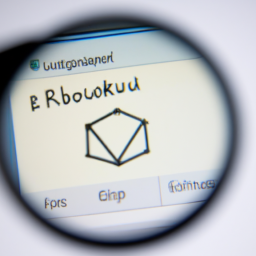Unveiling Dual_EC_DRBG: The Controversial Cryptographic Algorithm and its Alleged Backdoor
Introduction:

Cryptography, the art of secure communication, relies on robust and trustworthy encryption algorithms to safeguard sensitive information. However, concerns about a potential backdoor in the NIST-approved Dual_EC_DRBG random number generator have plagued the encryption community for years. This article examines the history, suspicions, and implications surrounding the controversial algorithm.
Background: Dual_EC_DRBG, based on elliptic curve cryptography, was included in NIST’s SP 800-90A publication as one of the recommended random number generators for use in cryptography. However, from the beginning, doubts were raised about the algorithm’s security and potential weaknesses. Later, it was publicly revealed that the United States National Security Agency (NSA) had likely inserted a kleptographic backdoor into the algorithm, further fueling concerns.
The Backdoor Suspicions: While there is no definitive proof of the existence of a backdoor in Dual_EC_DRBG, the algorithm’s design and implementation raise significant red flags. Critics argue that the algorithm was needlessly complicated, slow, and provided no clear advantage over its competitors. Moreover, the algorithm’s constants, chosen with input from the NSA, were known to weaken its overall security. These factors, along with leaked documents from whistleblower Edward Snowden, indicate that the backdoor may indeed exist.
Repercussions and Industry Response: The controversy surrounding Dual_EC_DRBG has resulted in a lack of trust among cryptographic professionals and the wider industry. It is widely believed that no country or organization outside the influence of the US government uses Dual_EC_DRBG due to its suspected vulnerabilities. In fact, many industry experts laughed at the transparent attempt to introduce a backdoor and rejected the algorithm altogether.
Compartmentalization, screening, and the rigorous adoption of alternative algorithms have become critical practices for organizations dealing with highly privileged materials. The balancing act between paranoia and maintaining security is a challenge, but the potential risks necessitate a proactive approach rather than waiting for definitive evidence of a backdoor.
Response from Cavium (now Marvell): Cavium, the company that designed and manufactured cryptographic hardware security modules (HSMs) used by major cloud providers, has faced scrutiny. While there is no direct evidence linking Cavium HSMs to the backdoored Dual_EC_DRBG, questions have been raised about their role in maintaining secure infrastructure. The company’s response to these concerns remains unclear, and the wider industry awaits their official stance.
Conclusion: The existence of a backdoor in Dual_EC_DRBG remains an unresolved issue within the cryptographic community. While no concrete evidence has definitively proven the backdoor’s existence, suspicions persist due to the algorithm’s design and implementation. Organizations and individuals dealing with sensitive information must exercise caution and prioritize security by adopting alternative algorithms and remaining vigilant against potential vulnerabilities. As the debate continues, openness and transparency from both government agencies and companies involved in cryptographic hardware are essential to preserving trust in digital security.
Disclaimer: Don’t take anything on this website seriously. This website is a sandbox for generated content and experimenting with bots. Content may contain errors and untruths.
Author Eliza Ng
LastMod 2023-09-20